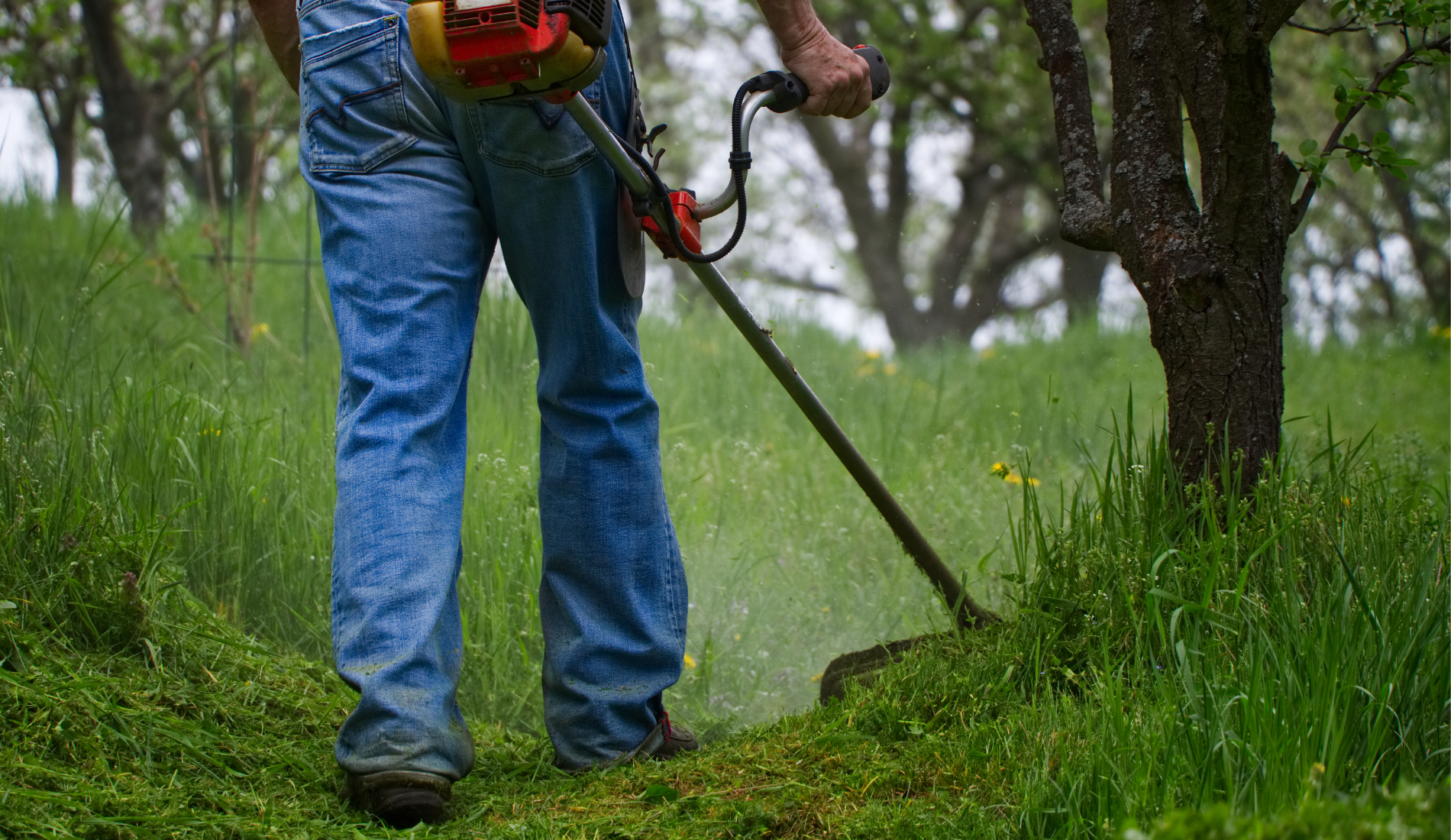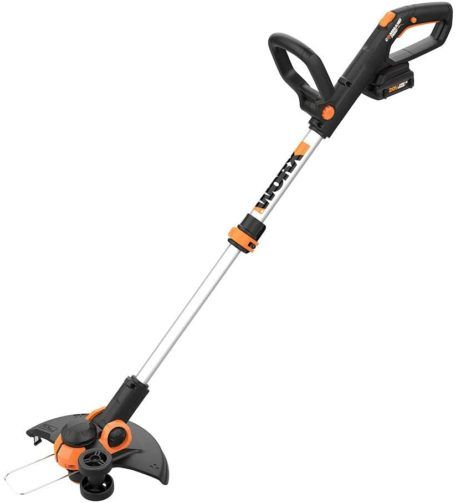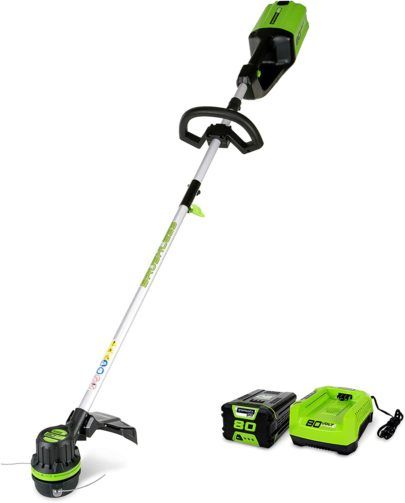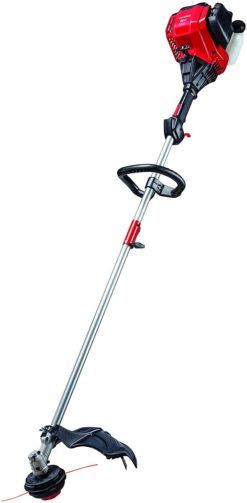Sometimes you need more than a lawnmower to get your yard in order (let alone keep it that way). Whether your lawn is simply overgrown along fence lines and foundations, you've recently purchased a new property, or you run a landscaping business, a brush cutter helps cut through the mess - literally.
Have you ever heard of a brush cutter? They are beefed-up weed eaters or string mowers, with more cutting power to boot. These diverse lawn tools are extremely helpful when maintaining a property with hidden obstacles among the weeds, as well as the tree trunks that are surrounded by overgrown brush.
Below, we compare some of the best brush cutter brands on the market, and we go over everything you need to know to make the smartest purchasing decision possible.
Backyard Boss Top 5 Brush Cutters
|
PRODUCT |
FEATURES |
||
|---|---|---|---|
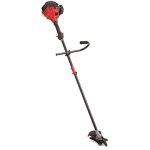
|
|
||
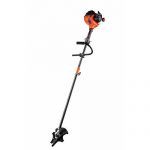
|
|
||
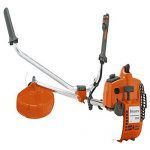
|
|
||
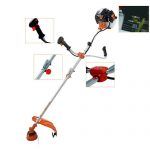
|
|
||
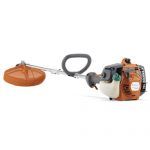
|
|
Why You Can Trust Us
When it comes to brush cutting, we've whacked down our fair share of brush, including shrubs, bushes, small trees, and "weeds" of all shapes, sizes, and manners. Sometimes a weed-eater and a lawnmower are enough, but sometimes brush is just too tough for such basic tools. In these cases, a brush cutter is a necessity if you need to get the job done.
Brush removal is a crucial part of maintaining your property and is an essential part of the home building process in general. For example, around ten years ago, I did a lot of brush clearing for a home builder, as well as eventually doing the same for a landscaping contractor out of the Seattle Tacoma area a few years later.
Having worked with all manner of tools on different properties, I can genuinely say there is no replacement for a good brush cutter.
Best Overall
With support for up to ten attachments, this WORX cutter can replace a whole shed full of tools, but it's an extra spend.
- Interchangeable Heads
- Adjustable shaft
- Two-year warranty
- Attachments and jump starter not included
- Steel shaft tubing could be stronger (bends when cutting saplings)
|
|
What We Like: A 90-degree tilting head, auto-feed feature, and telescoping shaft set this lightweight electric brush cutter apart from the rest.
The Worx WG163 GT 3.0 comes with a powerful brushless electric motor that runs on dual 20V batteries. It has a tiltable head, up to 90-degrees, and the spool holds up to 10 feet of .08 line. The shaft is ergonomic and has a telescopic design, so you can shorten or extend it as needed to reach all the right places.
It may not be as heavy-duty as some of the other models on the list, but it is one of the most versatile, lightweight, and easy to use. Not to mention it is more than affordable for a serious multipurpose landscaping tool.
Who Should Buy It: If you're in the market for one of the very best all-around brush cutters, you may want to end the search here with the Worx WG163 GT 3.0. The brush trimmer is everything you need around the home and garden and then some.
Best for a Wide-Variety of Uses
The Greenworks 80V 16 inch Trimmer is one for the books, it does it all: trimming lawns, edging sidewalks and paths, and even cultivating your garden.
- Multiple attachments for multiple jobs
- Thick .08 line
- Quick charge batteries
- Heavier than others
- Runs for under an hour unless strictly used for light trimming
|
|
What We Like: This versatile model features an edger trimmer and cultivator all in one and runs on a powerful electric motor with long-lasting batteries.
A big brushless motor powered by an 80V battery runs this 18-pound electrical brush cutting, edging, trimming beast of a brush cutter. The battery is of professional quality. That means it has the power to run a stronger engine.
Likewise, the advanced electric motor is stronger than the average electric trimmer, yet it runs quieter than most. Better yet, there is no priming gas and yanking on cords necessary to fire this puppy up. Simply press a button, and she is up and running.
Who Should Buy It: If you have a variety of jobs to do, from personal lawn care to professional landscaping, trimming, cutting, and edging, the Greenworks 80V 16 Inch Trimmer could be your new best friend and workhorse.
Best Straight Shaft Cutter for Maintaining Your Yard
With a robust built-in 120V motor, and a lightweight body, this cutter can make your brush cutting jobs nice and easy.
- Auto feed feature
- Auxilary handle with guard
- Lightweight
- Handle design could use some work, It can be a bit shaky when in use
- Poor assembly instructions
|
|
What We Like: This electric brush cutter from B+D is super lightweight for its kind, and its motor is at least 40V stronger than most.
The BLACK + DECKER Electric 14 Inch Trimmer is one of the best lightweight brush cutters in the industry (that we know about). It sports an electric start, auto-feed feature, and an ergonomic multipurpose auxiliary handle that makes it one of the easiest-to-use cutters on the market for sure.
Even more, it is made by one of the most trusted manufacturers of tools, more specifically power tools, and is backed by their warranty and guarantee. It has been suggested that non-ethanol gas mixes are used to avoid gumming up the engine over time or adding ethanol additives. If not, you might be dealing with the added charge to have it serviced every so often to keep it running correctly.
Who Should Buy It: For those with light brush cutting duties, such as around the yard or garden at home, there are few better options. It is especially useful for seniors and those with physical disabilities.
Best for Commercial Use
This gas-powered brush cutter is more than capable of cutting through tough weeds and brush and is attachment-friendly.
- Large cutting swath
- Attachment capable
- Bigger spool than others
- Needs priming
- Pull-start only
|
|
What We Like: The CMXGTAMD30SA is a diverse option that is easy to use and works with numerous attachments from various manufacturers.
This 30cc gas-powered cutter from Craftsman has a bigger cutting swatch than most units on our list. It also works with a .095 line, which is thicker than the .07 and .08 lines that many trimmers use. The handle is comfortable and fully adjustable.
Further, it is designed to integrate with a countless number of attachments from popular brands, including Craftsman and Trimmer Plus. The spool holds 20 feet of line, and there is no mixing gas and oil to worry about, which makes this cutter easier to maintain than older gas models.
Who Should Buy It: This Craftsman brush cutter is an excellent choice for professionals that work a variety of jobs, cutting everything from lawns and shrubs to edging and brush cutting.
Best for Heavy-Duty Trimming
This model will help you power through your yard work and with the right attachments, it can replace several other tools you might need.
- Low vibration
- Translucent fuel tank to monitor gas level
- Two-year warranty" con1="Leaks bar oil if not stored with tank upright
- The attachment joint has a plastic part that can break with heavy work
- Poor customer service
|
|
What We Like: Another convenient tool, this model also boasts interchangeable heads and a strong 28cc engine to power through the many obstacles you may place in its way.
Lightweight and easily maneuverable with a straight shaft, this cutter was made with the backyard enthusiast in mind to get a day’s job done. It also boasts a much lower sound while running to help save your ears during long periods of use (although you should always use ear protection).
The curved handle and comfortable shaft grips ensure you have a good hold and can reach into the areas you need without sacrificing strength and exhausting yourself before you can get the job done. Reviews have even suggested it runs as well as a commercial-grade product, although it is not marketed as one.
Who Should Buy It: This is a choice for anyone looking for a simple machine to get some heavy-duty work done but wants a true bang for their buck and a reliable cutter that is built to last.
How Are Brush Cutters Different Than String Trimmers?
Image credits: Ergin Yalcin via Canva
We already mentioned that a brush cutter is a more powerful version of a string trimmer, but what exactly is the difference? This is important to take note of because at first glance it’s easy to interchange them. However, there is most definitely a vast difference between the jobs they are being marketed for.
The biggest difference is that a string trimmer uses a nylon cord to cut through vegetation. Also, the heads can occasionally be interchangeable with more durable choices (such as a blade) for the occasional tough-to-cut area. The power behind that head may not be up to the task of consistent heavy usage.
A string trimmer is an excellent choice for trimming down grasses and small to medium-sized weeds in hard-to-reach places, such as around obstacles and fences or under decking and overhangs where a lawnmower cannot reach.
A brush cutter uses a metal blade or saw to cut down thick weeds, small saplings, and other neglected areas that can be hard to get. It also has a lot of power to get the job done, although it will be heavier than a string trimmer. Even more, they often include a harness to allow your body to carry some of the weight.
Electric vs. Gas Choices
As with most yard maintenance products, you have choices to consider before heading out to make a purchase, and it’s important to know the differences before you make a final choice. Brush cutters come in either an electric or gas-powered version.
Electric Brush Cutter
Electric or cordless versions are run by a plug-in through an extension cord or a battery pack. Both of these versions are somewhat limiting in that you may not get the power you need, where you need it, or for as long as you need it. It’s hard to even find an electric brush cutter to purchase due to the popularity of gas-powered cutters.
Gas Power Brush Cutter
A gas power cutter has more options to choose from in general, including settings, features, and add-ons. It can also be taken anywhere you need it without the worry of having an electrical source. In addition, gas power cutters can power through just about anything it is rated for (such as heavy, thick weeds, small saplings, or high, tangled grasses).
Here’s a video that covers the differences between gas string trimmers and electric string trimmers. These differences carry over to brush cutters too, with the obvious exception that cutters have metal blades, whereas trimmers have nylon strings.
2-Stroke vs. 4-Stroke
A gas-powered brush cutter comes with either a 2-stroke or 4-stroke engine. The main difference between the two lay in how the engines run; namely, a 4-stroke weighs more and runs cooler with more power output, although the design is more complicated and runs unbalanced. It also is more expensive.
A 2-stroke engine stays balanced due to a more even Power-stroke. They are also more affordable, somewhat easier to maintain, and require less space: resulting in a smaller engine- which is ideal for handheld maintenance tools.
Watch how a 4-stroke engine compares to a 2-stroke:
You're most likely to have a 2-stroke engine on your brush cutter. As far as operating goes, the main difference here is that you have to mix the oil into the gas at the correct ratio and then pour the mixture into the gas tank. There is no oil reservoir on a 2-stroke engine.
Your brush cutter will probably come with a mixing bottle with the correct ratio written on the bottle with markings to help you get the right mix. Getting the right mix is important. Too much oil in the mix, and you risk gumming up the carburetor. Too little, and the engine will burn up due to lack of lubrication. Take the extra time to get the mix right.
Features
Image credits: kekko73 via Canva
Although the features of any particular product vary due to brand and style, there are a few features that you should be familiar with to properly determine your preferences before purchasing this handy landscaping tool.
Shaft
The shaft connects the engine to the spinning head, and you can either purchase a straight or bent shaft brush cutter model. As a general rule of thumb, straight shafts are better for folks with taller frames and stronger backs, and curved shaft units are better for shorter people and seniors.
A curved shaft can get you closer to your job, but since linking mechanisms are needed to provide the bend, bent shaft models are also more prone to mechanical problems.
Straight shaft models also have more power due to having a direct line to the power source. Many straight shaft models work better with multiple different attachments due to this factor as well.
Another difference in these types of shafts is the composition of the shaft itself. Some shafts are made of rigid steel and transfer the power from the engine into the gear head. These only work with straight shaft machines. These are more suited to professional, commercial products.
Products for home use are equipped with a flexible inner shaft. It allows the transfer of power from the engine, along the bent shaft, and to the blades. Flexible shafts don't require a gear head. Some straight shaft products that are designed for home use still have a flexible inner shaft.
Quick Change Heads
To make brush cutters more versatile and appealing to consumers, some models have interchangeable heads and multiple attachment options. These models are without a doubt more affordable in the long run since they can complete multiple tasks, both small and large. The most popular heads include string trimmers and blade attachments - that way, you can use your brushcutter as a weed wacker and edger as well.
The quick-change features allow you to change out the heads with a simple tool or lever rather than having to unscrew the entire head unit.
There are many different types of blades available, depending on the manufacturer. Which blade is suitable for you depends on what you're doing. Knife blades usually include three sharp blades equidistant apart. Chisel blades have many small blades around the perimeter of the disc. And then basher blades aren't necessarily bladed at all but rely more on the force of the spinning mechanism to clear soft wooded weeds.
Here's a hack to turn your brush cutter into a powerful cutting machine that you can try at your own risk. It's possible to find table saw blades that fit your brush cutter. For the best of luck, look for a table saw blade made of the same brand as your brush cutter. In a pinch, you might need to use washers as spacers so that everything fits together properly.
Table saw blades are much sharper than brush cutter blades, and I often use this combination to clear dense bush with thick trunks that would be inefficient to do with a chainsaw. Make sure you follow all safety recommendations to a T if you choose to go this route.
Handles
Because brush cutters are heavy-duty, you need a good grip to get the job done. A looped handle or two handle-bar type designs are the most popular for a sturdy hold over a long period of use. Both require two hands to hold and control the power of a brush cutter, and since you are using blades and saws at the end, quality grips are an important consideration as you don’t want to become fatigued during use and end up hurting yourself.
Most brush cutters have all the controls on one handle, while the other handle is for stability purposes only. The controls include the accelerator, on/off switch, and some models have a locking mechanism so you can spin the blades without having to hold down the accelerator.
Vibration
Many small engines now come with an anti-vibration feature for when your tool is in idle mode (just running but not cutting). The highest-quality cutters also have very little vibration when in use to begin with, although more will be present with the amount of power output. The level of vibration produced by brush cutters can be difficult to gauge from one unit to the next. Reading through product reviews can help determine how much vibration is felt.
How To Use A Brush Cutter
Image credits: Mike_Pellinni via Canva
The finer details about using your particular brush cutter depend on what model you buy and should be covered extensively in the manual. However, an important element that is often overlooked is the direction in which the blade is spinning.
It's a really important point and is vital for the safe use of your brush cutter. Most blades spin in an anti-clockwise direction but don't take that as a given. Make sure you check which way your particular model spins.
This is an important point because the direction in which your blade spins determines which part of the blade is doing the cutting, and which part is susceptible to getting tangled up in long vegetation.
For example, let's assume that your blade spins in an anti-clockwise direction. If you imagine your blade as a circle that's divided into four quadrants, the upper left quadrant will be your cutting edge. You should try your best to keep only this part of the blade in contact with vegetation, so it makes sense that a sweep from right to left will be the most effective cutting movement.
Any other parts of the blade will be susceptible to getting tangled up in vegetation, particularly the lower right quadrant. The risk isn't too great with short vegetation, but the longer the vegetation gets, the higher the entanglement risk. A tangled blade could blow your engine or result in serious injury in some cases.
How To Stay Safe
The first thing to do is to understand your machine and how it works. The paragraph above covers a vital element that you should know about your brush cutter before you start using it. Start there.
Next, always use personal protective equipment when you use your brush cutter. It should include but is not limited to ear protection, eye protection, face, and head protection, gloves, and boots.
You would rarely come into contact with a spinning blade. In all likelihood, what you're protecting yourself from is the flying detritus that gets flung up by the blade while you're working. It only takes the tiniest pebble at a high velocity to cause serious eye damage.
All brush cutters come with a removable guard around the blade. This guard intends to protect the user from a rogue blade if it manages to come off its mounting for some reason. It's also helpful to stop pebbles from hitting you in the feet and legs. Leave the guard on.
How to Choose the Best Brush Cutter for Your Job
Image credits: anaimd via Canva
Again, picking out the best crush cutter for you requires a bit of knowledge and planning. The following factors should be considered before choosing the best model for you.
What Is Your Budget?
Brush cutters cost more than a basic string trimmer does, and they also require more overall maintenance in the long run. If you are unsure if this is a product you need for your job, weigh your options and needs before putting down a few hundred dollars on something you may only use once a year. That said, if you know you need one, you should consider your budget before you ever start shopping, as these powerful tools come with a wide range of price tags.
What Do You Need to Cut Down?
Before you invest in a brush cutter, decide if you truly need one. Sometimes, a weed eater and a lawnmower are more than enough to maintain your property. However, if you have seriously overgrown areas laden with heavy grasses, weeds, and small trees, you are right in considering a brush cutter as an option. But, if you are simply looking for a one-time fix, renting (or borrowing), the machinery may be the way to go.
Are You Physically Able to Use a Brush Cutter?
Not to be confused with a string trimmer (weed eater), these suckers tend to be pretty heavy. They may not seem so on first heft, but after 20 to 30 minutes of continuous use, you’ll begin to feel the weight on your back and shoulders. Hence, most brush cutters come with a harness that helps to bear the burden. Add in the vibration, and you have a whole body workout in progress - for real!
If you suffer from chronic pain, skeletal problems, or are of advanced age (65+), you may want to consider a lighter and easier to handle option. In this case, a basic weed eater is your best bet. Or, you may want to consider hiring someone to clear your brush every year.
How Big Is the Area You Need to Cut?
Large properties require a more durable product since you’ll most likely be cutting down vegetation far more than once a year and will need the unit to last as long as possible. Smaller areas, like the average in-town yard, are easier to clean up using other tools like string trimmers and lawnmowers. In this case, a brush cutter is an investment you don't really need to make.
FAQ
How Much Power Do I need?
What are you cutting? For dense bush, look for something in the 35cc range and upwards. For lighter jobs, like lawn mowing and edging, an engine with less power will suffice.
Which Blade Should I Use?
For denser, harder wood bush with thicker stems, you should use either a chisel blade or a knife blade. For softwood weeds or watery growth, a smasher blade will do the job.
Gas Or Electric?
You'll get more power and a wider range of use with a gas brush cutter. Although they are more expensive and may require more maintenance. Electric brush cutters are quieter, lighter, and cheaper, but you're limited by the length of the power cord. The choice is yours.
How We Picked
Brush cutters are one of those tools that need to be genuinely tough and work well out in the field. If not, they end up breaking regularly and costing even more money or leaving you without a proper tool for the job. In other words, if you're going to buy one, you should consider investing in one of the very best for you and your specific needs rather than purchasing the first affordable unit that you come across at Walmart.
Putting together this list of the five best brush cutters was a sinch for one reason; there seems to be a shortage of excellent and authentic products on the market. After sorting through some of the units with the most reviews and highest ratings, we quickly got rid of several popular selections after we began to closely examine and compare them one by one. We looked at cost, design, efficiency, quality of materials and components, settings, and other features.
Picking the Best Brush Cutter for You
There are plenty of options for brush cutters, whether you're in the market for an electric, battery, or gas-powered unit. That said, the 2-stroke gasoline cutters are the most versatile and powerful. Our top pick is the WORX WG163 GT 3.0, as it fits most yards, is lighter, and has multiple attachments for the various jobs you need it for.
Let us know which model you believe is the best on that list, and as always, please share!

